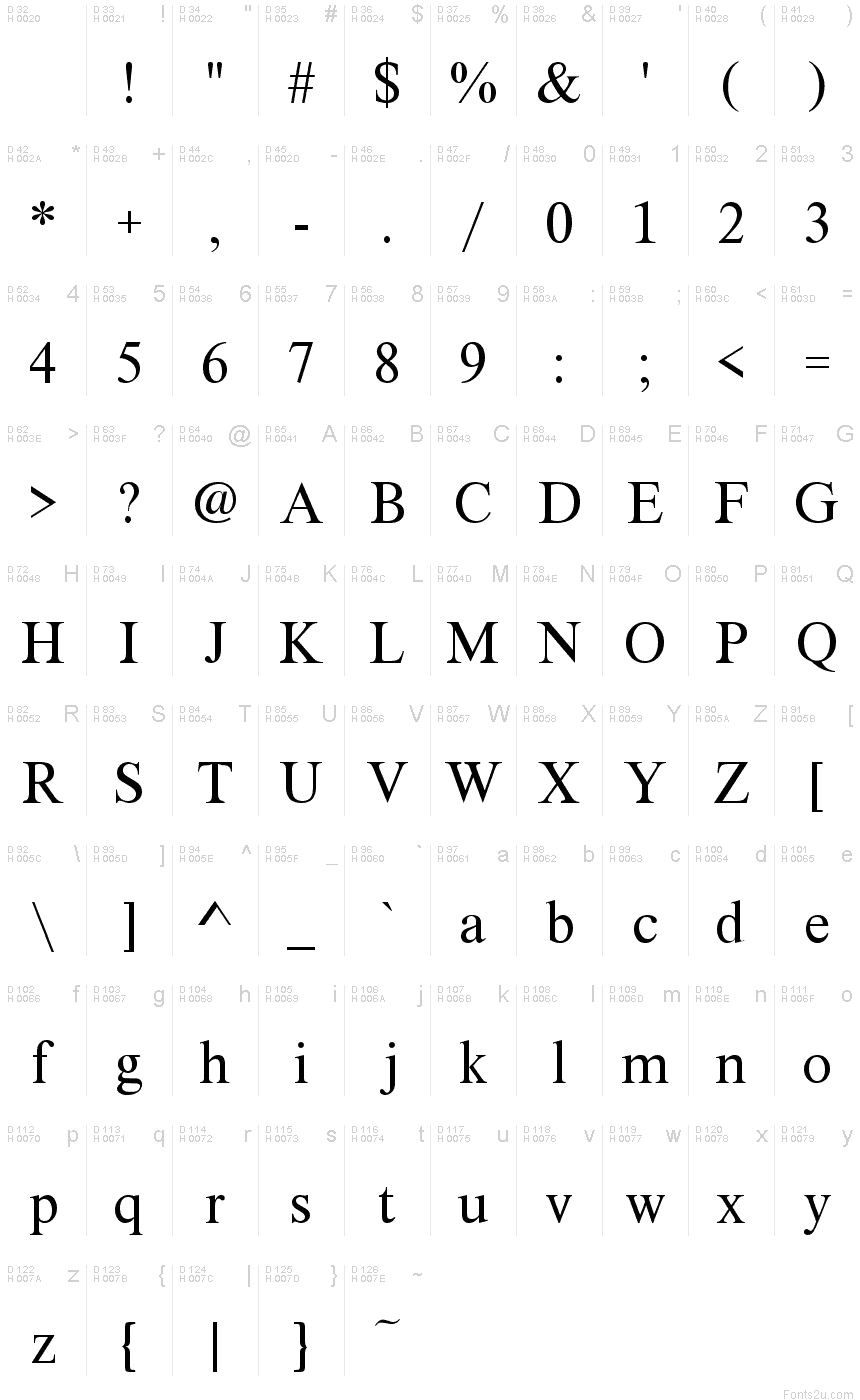XSerif Unicode
TrueTypeUso pessoal
- Acentos (parcial)
- Acentos (completo)
xsuni.ttf
Tags
Mapa de caracteres
Porfavor use o menu suspenso para ver os diferentes mapas de caracteres contidos nesta fonte.

Informaçőes de fontes básicas
Nota de direitos autorais
(c) Ch. Singer 1997. Use Font Property Extension to read License table.
Família da fonte
XSerif Unicode
Subfamília da fonte
Regular
Identificação única da subfamília
DTP- XSerif Unicode Version 1
Nome completo da fonte
XSerif Unicode
Versão da tabela de nomes
Version 1.00
Nome da fonte do postscript
XSerifUnicode
Nota da marca registrada
Created by Type-Designer 3.0
Nome do fabricante
Descriçăo
In addition to the codepages mentioned in "Charset/Unicode" table, this font contains Old Russian characters (Yat', Fita, Izhitsa) and combining diacritical marks with it's right UNICODE numbers.
There are also further characters used by Trediakovskij in 18 century and some characters for transliteration in user defined UNICODE area.
You can use these characters only if you have a UNICODE-based text processor (e.g. MS Word 97).
XSerif Typeface
When I wanted to create some special fonts for students of slavistics (e. g. for transliteration an Old Russian) I looked for a font with a "Times®"-like typeface that I could use as a base for my new fonts. But I found that all quality fonts are copyrighted and the quality of free and public domain fonts on Internet didn't please me, so I decided to create a new font with a slightly changed "Times®"-like typeface that I called "XSerif". Most common letters as "A" or "H" probably look like they do in every similar typeface, except slightly different poportions, serifs and weight, but some letters as cyrillic "zh" or cyrillic "l" are originally designed because I didn't like their shape in other "Times®"-like typefaces.
There is only Regular typeface existing at this time.
If you are looking for a base font to create fonts containig special characters you can use XSerif fonts under the two conditions described in "License" table.
There are also further characters used by Trediakovskij in 18 century and some characters for transliteration in user defined UNICODE area.
You can use these characters only if you have a UNICODE-based text processor (e.g. MS Word 97).
XSerif Typeface
When I wanted to create some special fonts for students of slavistics (e. g. for transliteration an Old Russian) I looked for a font with a "Times®"-like typeface that I could use as a base for my new fonts. But I found that all quality fonts are copyrighted and the quality of free and public domain fonts on Internet didn't please me, so I decided to create a new font with a slightly changed "Times®"-like typeface that I called "XSerif". Most common letters as "A" or "H" probably look like they do in every similar typeface, except slightly different poportions, serifs and weight, but some letters as cyrillic "zh" or cyrillic "l" are originally designed because I didn't like their shape in other "Times®"-like typefaces.
There is only Regular typeface existing at this time.
If you are looking for a base font to create fonts containig special characters you can use XSerif fonts under the two conditions described in "License" table.
Informações da fonte estendida
Plataformas suportadas
PlataformaCodificaçăo
MicrosoftUnicode BMP só
MacintoshRomano
UnicodeUnicode 1.0 semântica
Detalhes da fonte
Criado1998-04-09
Revisăo1
Contagem de glifos463
Unidades por Em2048
Direitos de IncorporaçăoIncorporação para instalação permanente
Classe da famíliaSerifas de forma livre
PesoMédio-leve
AmplitudeMédio (normal)
tipo de larguraNormal
Estilo para MacNegrito
EndereçoApenas glifos fortemente da esquerda para a direita
Padrăo naturalRegular
PosturaVertical
Espessura do traçadoNormal
AfastamentoNăo monoespaçado